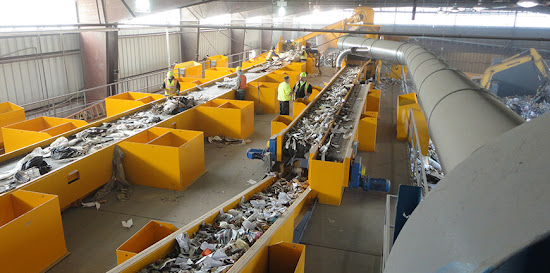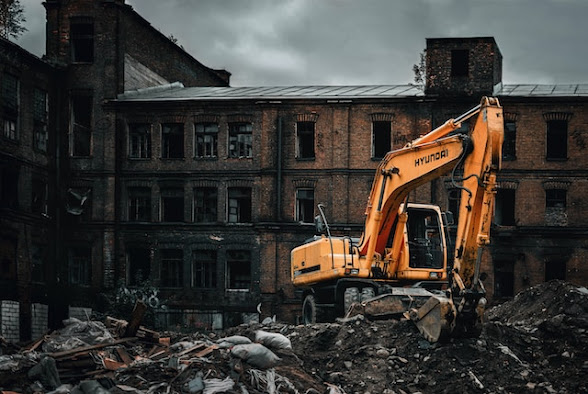Search This Blog
Most Popular
What is a Transfer Beam?
May 27, 2020
Categories
- Building Construction (83)
- Building Materials (82)
- Columns (2)
- Concrete Beam (3)
- Concrete Construction Techniques (4)
- Concrete Mix Design (10)
- Concrete Repair (14)
- Concrete Slab (10)
- Construction Equipment (16)
- Construction News (7)
- Design of Structures (15)
- Engineering Drawing (1)
- Estimation (3)
- Geotechnical engineering (26)
- Highway Engineering (11)
- Innovations (30)
- Material Testing (9)
- Matrix Analysis of Structures (2)
- Mechanical Engineering (3)
- Strength of Materials (2)
- Structural Analysis (17)
- Structural Design (21)
- Structures (17)
- Transportation Engineering (9)
Construction and Demolition Waste Disposal: How to Get Rid of It?
Neenu
July 06, 2023
Construction and demolition waste materials, often referred to as C&D waste, are the byproduct of construction, refurbishment, and demolition activities involving buildings, roads, and bridges.
In this comprehensive blog post, we will explore the composition of C&D materials, their environmental impact, and the importance of proper waste disposal.
What Are Construction and Demolition Waste Materials?
C&D (Construction and demolition) waste materials are the detritus created during the construction, refurbishment, and destruction of buildings, roads, and bridges. But what exactly are the C&D materials? It is made up of both heavy and light elements like concrete, bricks, and other construction components. |
Approximately 30% of all building materials delivered to a specific site in the United States end up as C&D trash. However, this debris may be recycled and reused in future building projects.
Why is Construction and Demolition Waste Disposal Important?
C&D waste is becoming an increasing concern in the United States. Construction and demolition operations create around 9.5 million tons of garbage each year. That equates to almost 1.5 pounds of garbage for each individual in the country! This debris consumes a lot of landfill area and can be difficult and expensive to properly dispose of. |
| C&D Waste Generation by Material as per EPA 2018 |
Furthermore, C&D trash may include hazardous substances that seep into the environment. Fortunately, there are methods for reducing the quantity of construction trash produced. However, working with a competent garbage removal firm is essential to guarantee that the material is correctly disposed of.
How to Dispose of Construction and Demolition Waste?
Source Reduction
Source reduction is the best possible way to reduce construction waste. Reuse and recycling are essential, but they can’t keep up with the amount of waste produced. Source reduction means making changes to the way you design, build, and use products so that you generate less waste in the first place.Salvage & Reuse
With the correct recycling equipment, such as garbage compactors, shredders, crushers, and balers, most construction and demolition (C&D) materials may be recovered. Construction and demolition trash that is commonly collected includes:- Wood, brick, and concrete
- Gypsum wallboard
- Steel and other metals
- Asphalt paving and shingles
- Non-asphalt roofing
- Architectural materials
- Material recovered from land clearing
Send for Recycling
Recycling building materials and construction trash has a huge business. You may also utilize these recycling facilities to dispose of concrete and other building materials. |
| Construction Demolition Waste Recycling System Image Credits: Terex Corporation |
The following are the most typically recycled C&D wastes:
- Metals like copper, brass, and steel
- Wood
- Asphalt, concrete, rubble
- Cardboard packaging
It's a good idea to double-check that the recycler you pick abides by state and municipal regulations and has all essential licenses and permits. It is critical to prevent improper recycling material handling.
Buy the Used or Recycled Building Materials
You may help the building material recycling industry by employing recycled construction materials. It is also feasible to purchase used material that retains its quality when reused.Also Read On: Concrete Removal Methods in Concrete Rehabilitation
What are the Benefits of Construction and Demolition Waste Disposal?
C&D waste disposal refers to the management and correct processing of waste created during construction, restoration, and demolition operations. While garbage disposal may appear to be a difficult chore at first, it has various advantages:- Environmental Protection: Effective C&D waste disposal protects the environment by reducing pollution and the discharge of hazardous compounds. Waste diversion decreases the pressure on landfills while also conserving valuable landfill space. Furthermore, effective disposal procedures can minimize greenhouse gas emissions contributing to climate change.
- Resource Conservation: C&D garbage frequently includes valuable materials that may be salvaged or repurposed. Waste materials such as concrete, wood, metal, and plastics can be diverted from landfills and transformed into new products or utilized as raw materials in other sectors by employing recycling and recovery procedures. This conserves natural resources and decreases the need for virgin materials to be extracted.
- Economic Opportunities: By establishing job opportunities and assisting recycling companies, C&D waste disposal may produce economic advantages. Recycling and salvaging materials from building and demolition sites may help local economies, particularly through developing recycling facilities, waste management services, and associated industries.
- Reduced Costs: Proper C&D waste disposal can help decrease waste management expenditures. Construction businesses can reduce disposal fees and transportation expenses by using recycling and recovery strategies. Furthermore, recycling or acquiring recycled materials on-site might result in cost savings in new building or repair projects.
- Compliance with Regulations: Many countries have special legislation and procedures in place to ensure proper C&D waste handling. Following these laws assures legal compliance and assists construction enterprises in avoiding penalties and fines. It also indicates business social responsibility and a dedication to environmentally friendly methods.
- Enhanced Reputation: Implementing acceptable C&D waste disposal processes can help to improve a company's reputation and branding. Environmentally sensitive practices are increasingly valued by clients, stakeholders, and the general public. Companies may attract environmentally conscious consumers, investors, and partners by demonstrating a commitment to sustainable waste management.
- Improved Safety: Proper trash disposal techniques increase building site safety. The danger of accidents, injuries, and disease transmission can be reduced by clearing garbage and waste as soon as possible. Effective waste management also ensures that hazardous items are handled and disposed of securely, so protecting workers and the general public from injury.
Read More On: How to Buy Building Materials at Lower Rate in USA?
|
Author Bio |
Most Visited
Sieve Analysis of Aggregates - ASTM Standard
August 11, 2021
How to Calculate Cement Required for Floor Tiling?
July 02, 2020
What are Infiltration Wells?
April 15, 2024
Cross-Section of a Road – Geometric Design of Highways
February 26, 2021
How to Choose Good Quality Aggregates for Construction?
August 10, 2021
Traverse Surveying - Objective, Method and Procedure
January 19, 2022
Construction ERP System – A Comprehensive Guide
December 12, 2024
Top 7 Waterproofing Materials for Concrete Roofs
December 13, 2024
Search This Blog
MUST READ
What is PERT? Objectives, Pros & Cons
September 10, 2017
Terzaghi's Equation: Soil Bearing Capacity for Foundations
March 02, 2022
Contact Form
Footer Menu Widget
Created By SoraTemplates | Distributed By Gooyaabi Templates


0 Comments
Commenting Spam Links Are Against Policies